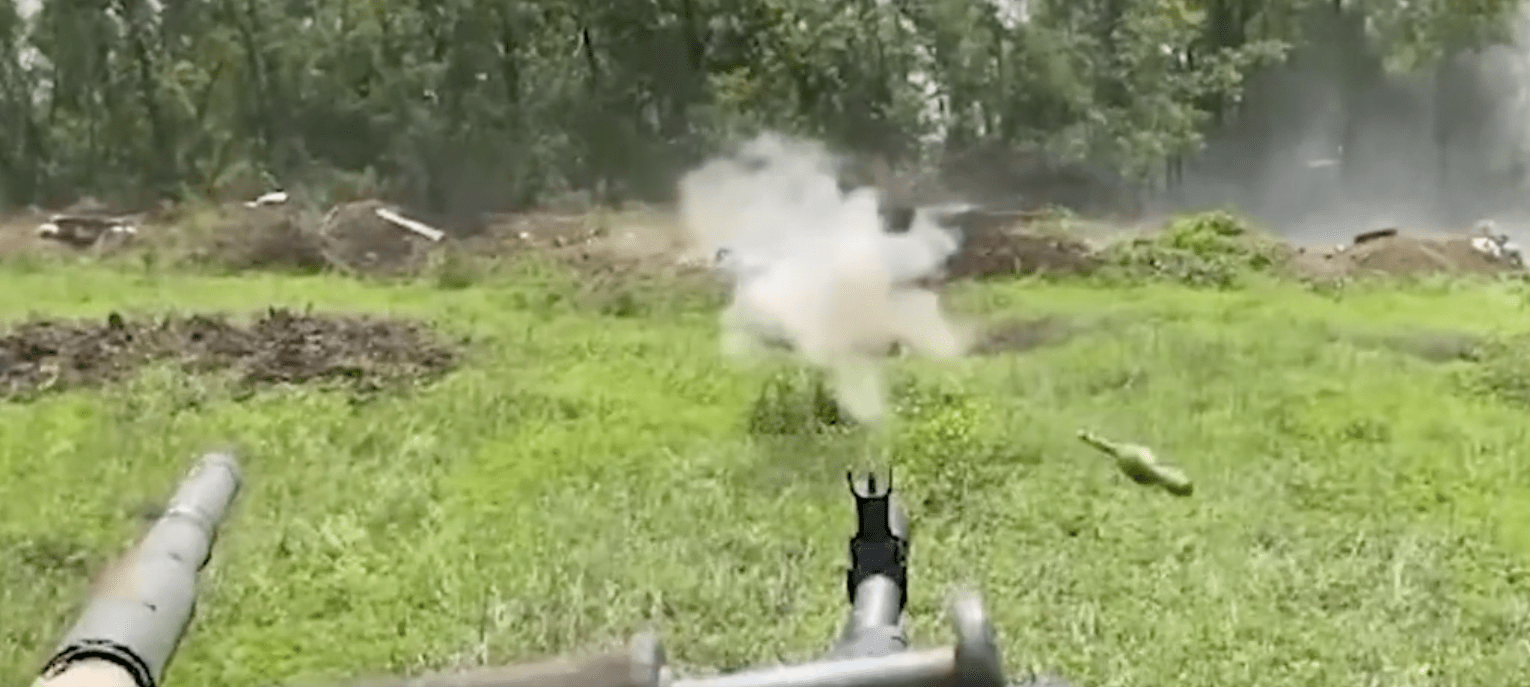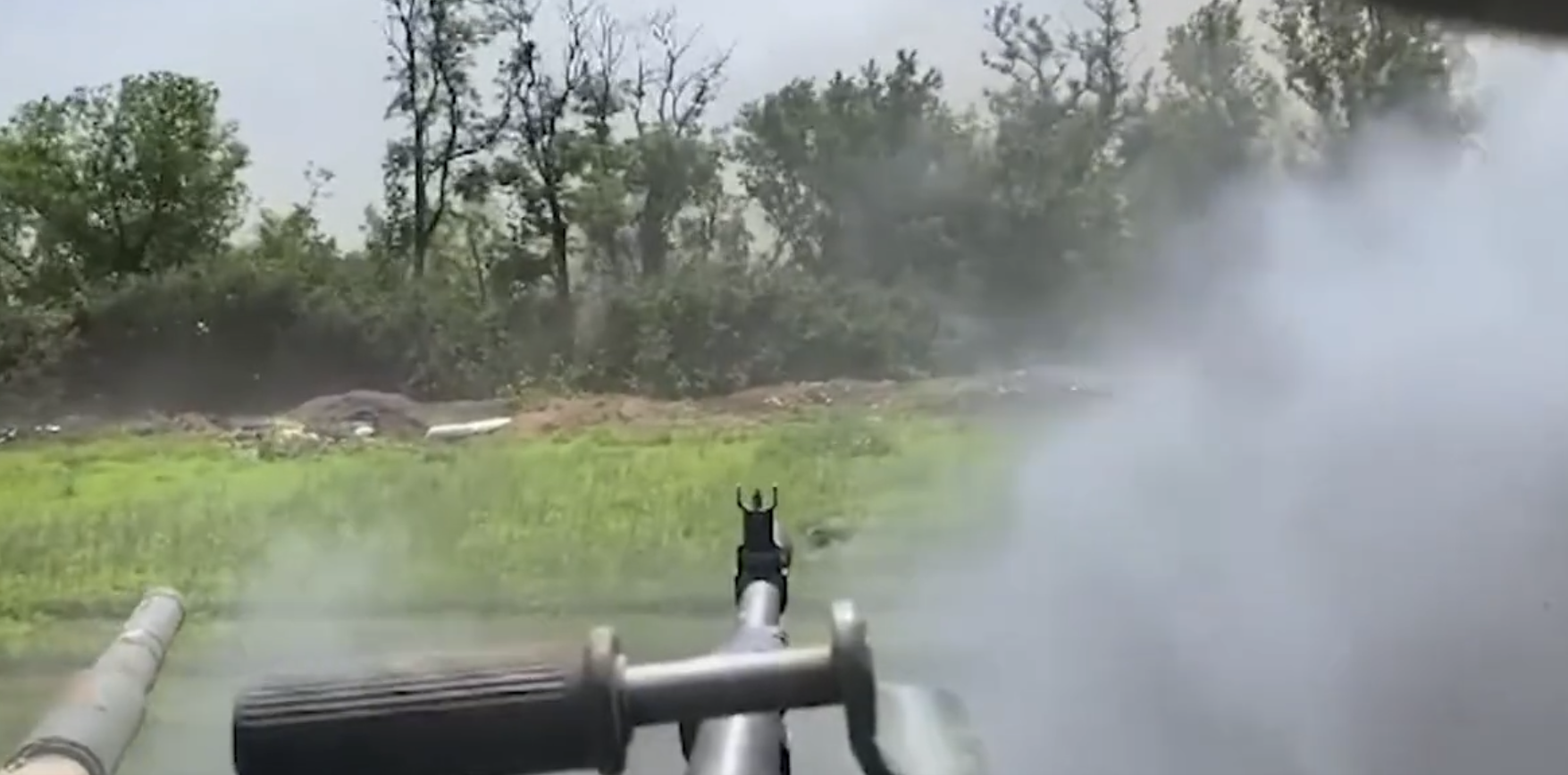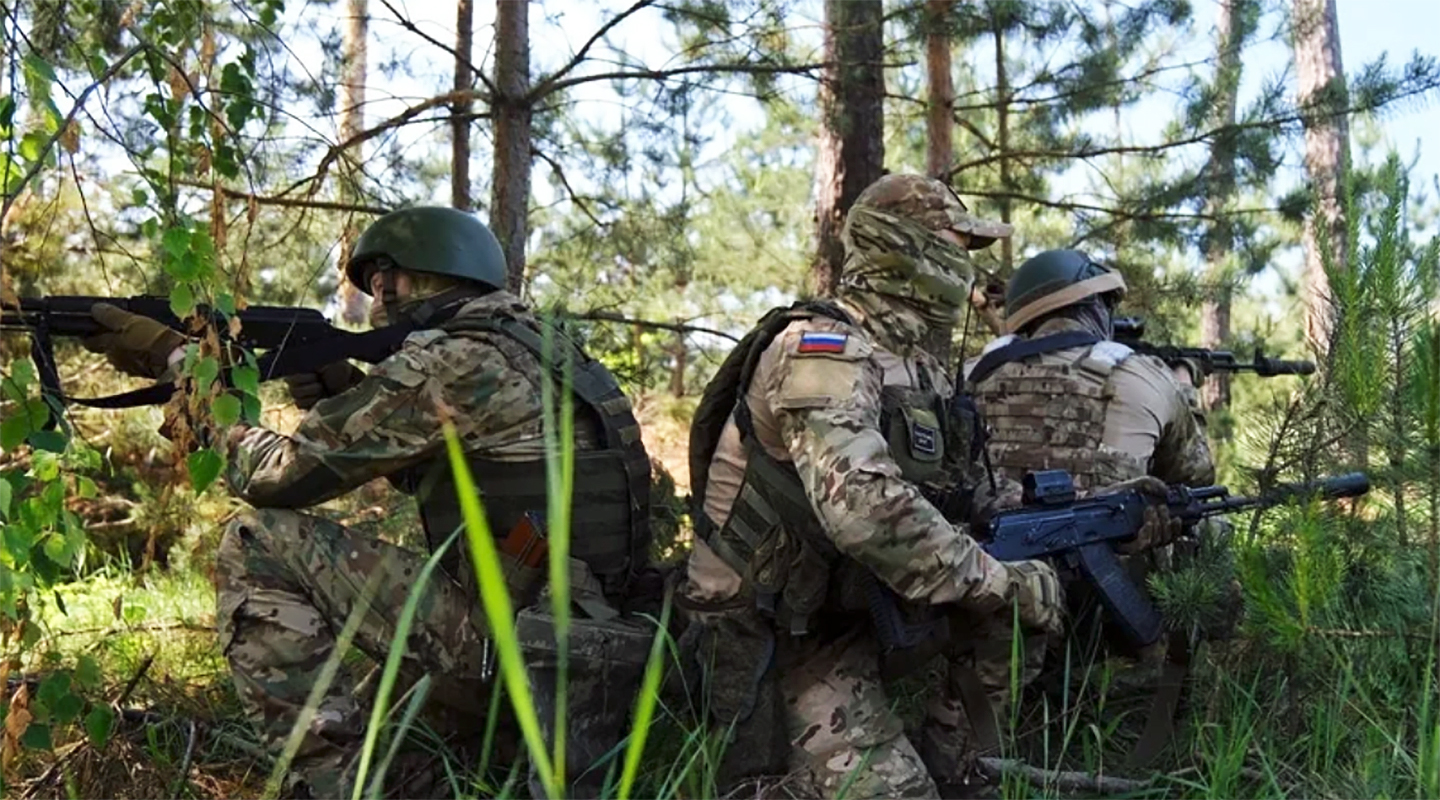There are indications that Russian forces have launched offensive operations of their own around in eastern Luhansk Oblast. While it is unclear at the moment how successful this is or how far the Russians might be advancing, it would appear to be another challenge facing Kyiv’s counteroffensive.
The influential Russian Archangel of the Special Forces Telegram channel claims Russian counteroffensive operations are currently taking place in the Donbas.
“The offensive of the 76th Airborne Division is underway,” Archangel of the Special Forces channel wrote. “The enemy has heavy losses in manpower, there is a massive failure of the armaments and military equipment.”
Ukraine “was not aware of our upcoming offensive, since they interact poorly with [electronic warfare] EW and [remote] REM units, they did not receive advance information about the planned air and missile attack.”
In statements on her Telegram channel, Ukrainian Deputy Defense Minister Hanna Maliar acknowledged some level of Russian offensive activity, especially by airborne units, in that general part of the front lines.
“The situation in the east is now difficult,” she said. “The enemy has raised its forces and is conducting an active offensive in the Lyman and Kupiansk directions, trying to seize the initiative from us. High activity of enemy shelling is recorded. Hot battles continue.”
Lyman, a small town in northern Donetsk Oblast, is about 16 miles east of Kreminna.
“The enemy does not abandon his plans to reach the borders of Donetsk and Luhansk regions,” said Maliar. “Currently, this is the enemy’s main offensive line. Therefore, he concentrated a significant number of his units in the east, in particular the airborne assault units.”
Ukrainian forces, she added, “act courageously in the face of the enemy’s superiority in forces and means and do not allow the enemy to advance.”
But Ukraine’s advance, however, “is quite difficult,” she said, “because the enemy threw all their forces to stop the offensive.”
As a result, Maliar cautioned about reading too much right now into how much territory Ukraine has recaptured.
“It is not necessary to measure the result of the work of the defense forces exclusively by settlements and kilometers traveled,” she said. ”Because there are much more criteria for the effectiveness of military operations.”
Still, she offered some hopeful news about operations in the southern part of the front lines in Zaporizhzhia Oblast.
“In the course of two weeks of offensive operations in the Berdiansk and Melitopol directions, eight settlements were liberated by units of the ‘Tavria’ [operational group]: Novodarivka, Levadne, Storozheve, Makarivka, Blagodatne, Lobkovo, Neskuchne, Pyatikhatky,” she said.
All told, in that area, Ukraine advanced up to 7 km and freed an area of 113 square kilometers, she said.
But, in keeping with Ukrainian assessments we reported on last week – and in line with reporting by The Wall Street Journal and others about a seeming pause in operations as Ukraine figures out what to do next – Maliar said the biggest push is yet to come.
The ongoing operation “has several tasks and the military is carrying out these tasks,” she said.“They move as they were supposed to move. And the biggest blow is yet to come.”
Before we head into the latest from Ukraine, The War Zone readers can catch up on our previous rolling coverage here.
The Latest
Regardless of what is happening on the front lines, Ukraine is continuing to conduct strikes well behind those lines.
Ukraine appears to have hit a major Russian ammo depot in the town of Rykove in occupied Kherson Oblast. That’s about 105 km behind the front lines.
There are increasing warning signs about the massive flow of weapons to Ukraine.
The New York Times on Monday reported that Ukraine has “paid contractors hundreds of millions of dollars for weapons that have not been delivered, and some of the much-publicized arms donated by its allies have been so decrepit that they were deemed fit only to be cannibalized for spare parts.”
Kyiv had paid arms suppliers more than $800 million since the Russian invasion in February 2022 for contracts that went completely or partly unfulfilled, the newspaper reported, citing Ukrainian government documents.
Some of the missing weapons had eventually been delivered, and in other cases brokers had refunded the money, two people involved in Ukraine’s arms purchasing told the Times.
“But as of early this spring, hundreds of millions of dollars had been paid — including to state-owned companies — for arms never materialized, one of these people said.”
“We did have cases where we paid money and we didn’t receive,” Volodymyr Havrylov, a deputy defense minister working on arms procurement, told the Times in a recent interview. He said the government this year had begun analyzing its past purchases and excluding problematic contractors.
Another wild video emerging on social media Monday showed a Ukrainian tank crew survive being hit by a Russian rocket-propelled grenade (RPG).
As the T-64BV tank belonging to the Ukrainian 35th Marine Brigade approached a trench near a tree line in Storovzheve, Donetsk Oblast, Russian troops fired two rocket-propelled grenades in rapid succession, the video showed.
You can see the first RPG, possibly a PG-7VR high explosive anti-tank round, whiz by the tank.

Seconds later, you can see a second RPG round apparently hit the tank somewhere on the right side. There is a small flash of an explosion, followed by bits of debris flying through the air and then a puff of grayish-white smoke. The damage appeared to be minimal.

A longer video from which this clip was taken shows that tank apparently recovered with some damage to its right front fender. It was likely saved by the explosive reactive armor on its right side, an armor expert tells us.
“If the RPG took out the T64BV, that would be incredibly lucky,” said the expert, a U.S. official with years of armor operations experience speaking on condition of anonymity to discuss ongoing operations.
The T64 and newer tanks operated by Ukraine “can easily survive a hit by an RPG on the front and sides of the turret,” said the expert. “An RPG can knock it out if it hits on the side hull and the rear. The turret can theoretically stand up to 100mm older armor-piercing rounds. It easily defeats a small shape-charge round.”
Most Ukrainian tanks have side ERA, said the expert.
“So that’s why it survived.”
The tank and its crew of Ukrainian Marines from the 35th Marine Brigade were apparently engaged in fighting a few miles south of Velyka Novosilka, near the Mokri Yaly River during Ukraine’s push through western Donetsk Oblast near the Zaporizhzhia Oblast border.
The Ukrainian troops in this video below were not quite as fortunate. They apparently were hit by a Russian tank shell as they entered a house in the village of Piatykhatky in Zaporizhzhia Oblast. It is unclear what happened to the troops.
Ukraine sources say they eventually liberated that village while a number of Russian Telegram channels say it changed hands several times over the past 24 hours but remains in Russian control.
And speaking of wild videos, rumors are bubbling that Russian propagandist Semyon Pegov, the man behind the influential Russian WarGonzo Telegram channel, was badly wounded during the Ukrainian special ops attack on a Russian trench, which you can read about in our recent report here.
While there appears to be a likeness, we have no way of knowing at the moment whether that’s true. For what it’s worth, there’s nothing about this on WarGonzo’s channel today.
With mines remaining a huge obstacle for Ukraine to overcome, more video has emerged of one of its UR-77 Meteorit mine-clearing vehicle’s rocket-assisted line charges apparently being used to clear a path. But those systems have also been used as offensive weapons in the past. You can read more about them here.
A donated Leopard 2A4 main battle tank was recently seen rumbling down a path in the southern section of the front lines. Where it was coming from or where it was going remains unknown, but it sure was moving in a hurry.
Images also emerged of a U.K.-donated Challenger tank in service with the Ukrainian armed forces.
Images have emerged on social media purporting to show a U.S.-donated M2A2 Bradley Fighting Vehicle launching its Tube-launched, Optically-tracked, Wire-guided (TOW) tank-busting missiles. It is unclear from the video the outcome of the engagement.
First Person Video drones remain a huge threat to both sides. The video below shows a very up close and personal attack on Russian troops in a trench, though where and when is unknown.
The French-donated AMC-10 RC wheeled armored vehicles are getting good marks from Ukrainian troops who are using them.
“АMX-10 RC were given to us by France, and have already proven themselves in the war,” the Ukrainian Deep State Telegram channel reported Monday. “Many have seen Russian manipulative footage of the unsuccessful use of this machine, but this ‘wheeled tank’, as many classify it, performs the excellent role of a gun that has high accuracy.”
But Deep State offered one caveat.
“The main thing is not to use them for frontal assaults,” it reported.
The vehicle “although lightly armored, has a gun like a sniper rifle.”
Despite that praise, it appears that Russia has captured at least one of them, complete with a technical manual.
More images have emerged on social media of Ukraine using its U.S.-donated Zuni unguided rockets on Su-25 Frogfoot attack aircraft. You can read more about them in our story here.
Mobility is a key factor in battlefield success and this Ukrainian sniper has apparently come up with one option for getting around in a hurry – some kind of electric unicycle. Initially, the sniper fires from the prone position, then while in motion. How effective that is, and whether this was all done just for show is unknown, but it’s interesting nonetheless.
The Russians too are innovating for mobility, but in the case of these images below, going a little old school. Russian troops appear to be using a Kornet anti-tank guided missile system mounted on a motorcycle sidecar. Ukraine has been employing missile teams using motorcycles with sidecars for over a year now.
The Associated Press, citing “exclusive drone photos and information” it obtained, claims “Russia had the means, motive and opportunity to bring down the Nova Kakhovka dam that was destroyed earlier this month while under Russian control.”
“Two officials said Russian troops were stationed in a crucial area inside the Kakhovka Dam where the Ukrainians say the explosion that destroyed it was centered,” AP reported. “Images taken from above and shared with the AP also appear to show an explosives-laden car atop the structure. It’s not clear the car ever exploded and any such bomb would not have been powerful enough to bring down the dam, but Ukrainian officials say the photos show the Russians’ intent to rig it, and that they had the access and control to do so.”
An anti-Russian Crimean Tartar partisan group claims that Russian troops are showing signs of cholera in the wake of the destruction of the Nova Kakhovka dam.
“Our informants from the military hospitals of the Kherson region and the Crimea report that every day they receive a lot of military forces of the Russian Federation with suspicion of cholera,” the Atesh group reported on its Telegram channel. “Entire units from the Kherson direction located along the North Crimean Canal lose their combat capability and are taken to the rear for treatment. Several Russian soldiers died.”
Atesh suggests that the cause is “most likely due to the use of water from open sources, because there are difficulties with the delivery of bottled or simply purified water to the occupiers. Naturally, the explosion of the Kakhovskaya dam caused enormous damage to nature, revealing many diseases that we will hear about.”
Atesh warned residents of the Kherson Oblast and Crimea “to be especially attentive to the water that you eat.”
Meanwhile, water levels in the area surrounding the Zaporizhzhia Nuclear Power Plant (ZNPP) remain low. However, while certainly troubling, there appears to be no immediate danger, according to the International Atomic Energy Agency (IAEA).
Last week, IAEA Director General Rafael Mariano Grossi assessed the impact of the destruction on the safety of ZNPP.
The plant’s large cooling pond and different channels at or near the site “hold sufficient reserves to be able to provide cooling water in the short to medium term in case the reservoir can no longer be used,” according to the IAEA.
At the moment, water from the discharge channel of the nearby Zaporizhzhia Thermal Power Plant (ZTPP) supplies the ZNPP’s spray ponds, which cool the six shut-down reactors and spent fuel, and also keeps the separate cooling pond full, mainly compensating for evaporation.
“The breach of the dam has identified vulnerable points in the plant’s water supply chain and there is a need to adapt the entire system to the new situation. But I could also see that the plant is taking concrete steps to address these challenges, stabilize the situation and enable the plant to ensure sufficient cooling water also in the future. The situation is serious, and it requires our continuous close monitoring. But, for now, it is being controlled,” he said.
The ZNPP is continuing to operate one of the six reactors in hot shutdown to produce steam needed for wastewater treatment and a steam-driven cooling system that provides air conditioning for rooms equipped with instrumentation and control systems important to nuclear safety and security, according to IAEA. In the interim, the plant is also exploring alternative ways to meet the site’s needs for generating steam and providing essential cooling. The five other units remain in cold shutdown.
And finally, even in a war as brutal as this one, there are down moments where troops try to have a little fun and take their minds off the fighting.
Such is the case with these Ukrainian troops, who organized a “fashion show” when they had time, not Russians, to kill.
That’s it for now. We’ll update this story when there’s more news to report about Ukraine.
Contact the author: howard@thewarzone.com
